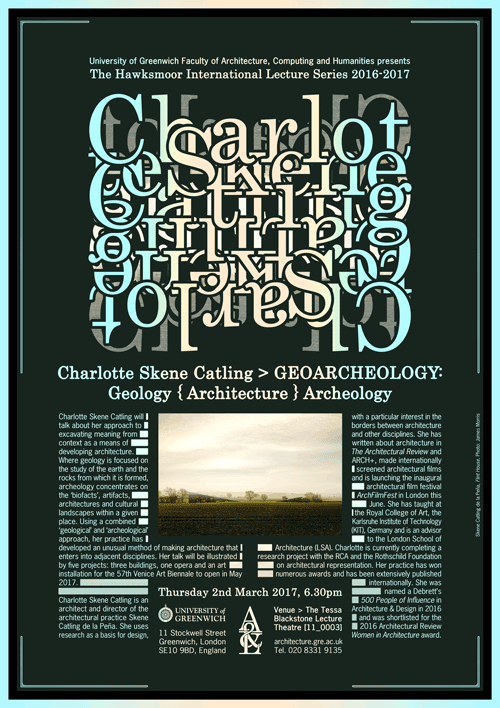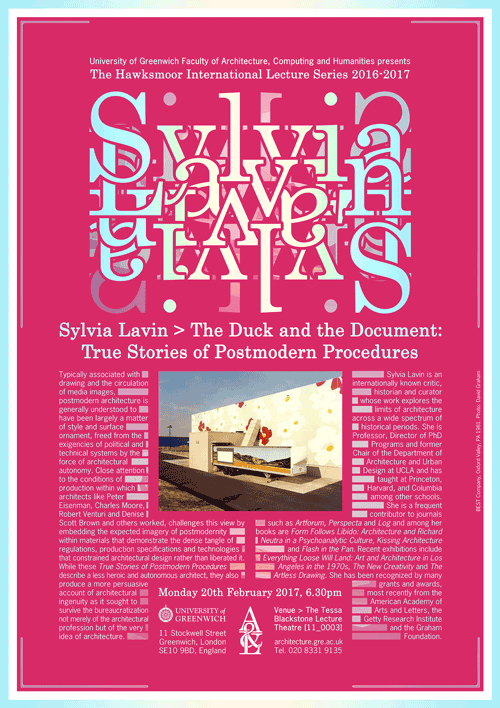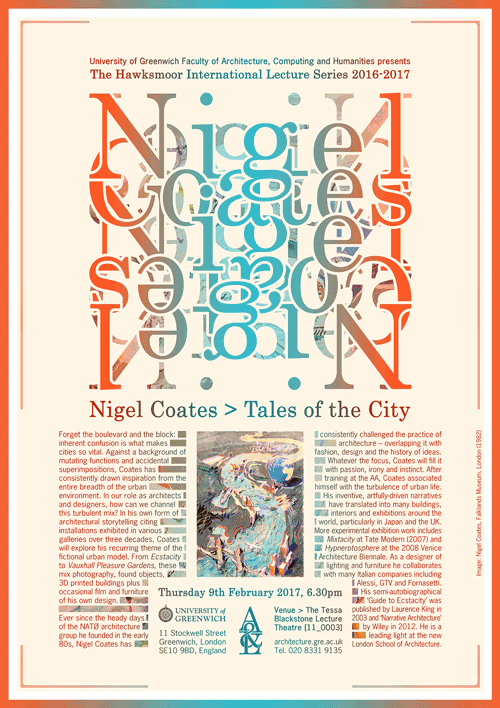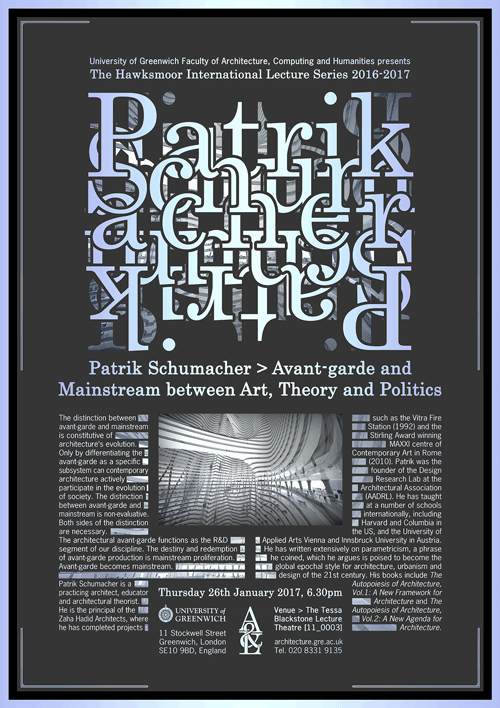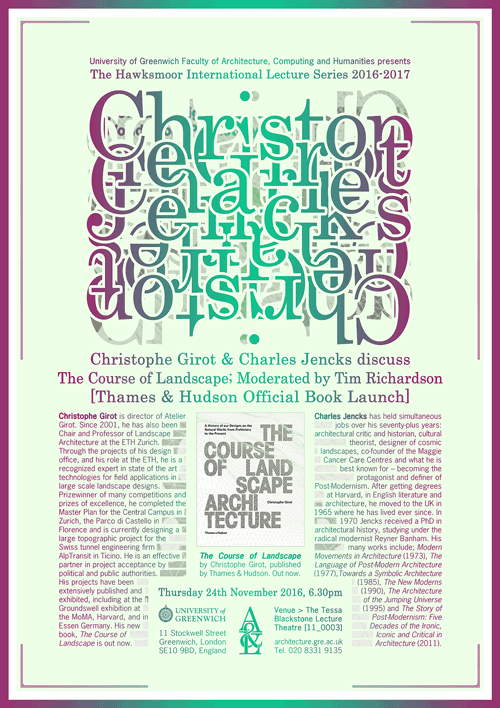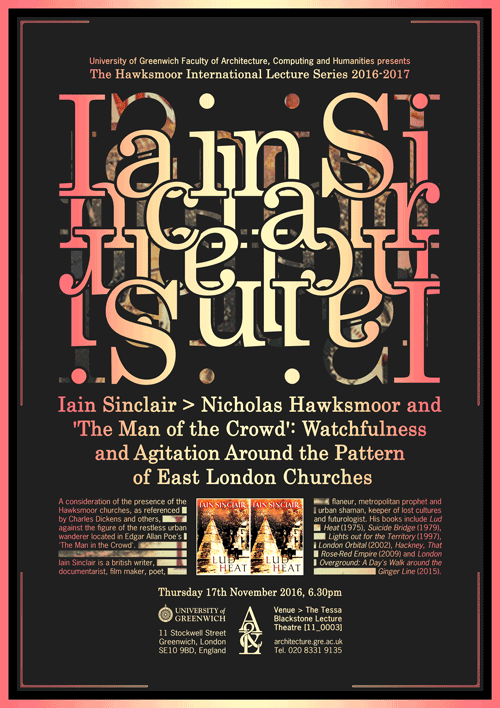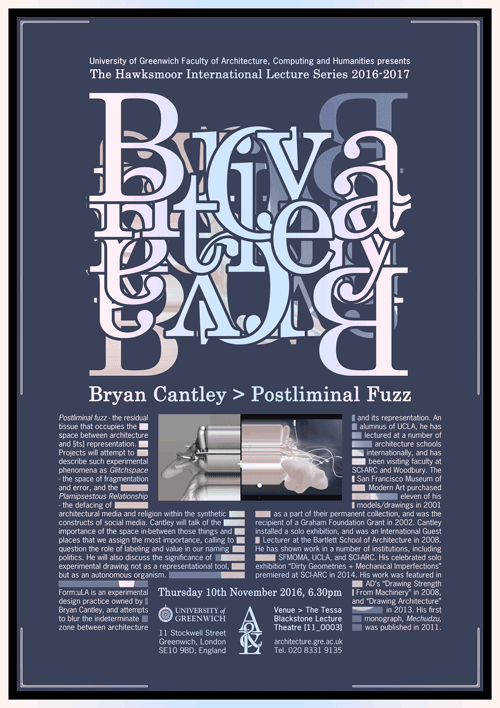- Thursday 9th March 2017, 6.30pm
- Tessa Blackstone Lecture Theatre [11_0003]
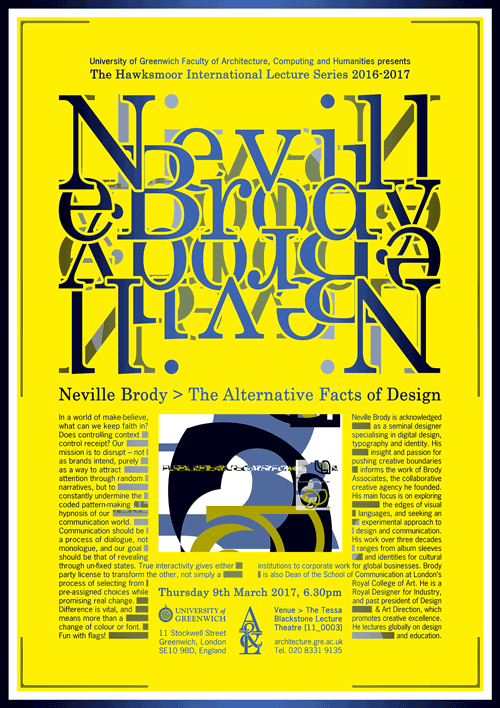
In a world of make-believe, what can we keep faith in? Does controlling context control receipt? Our mission is to disrupt – not as brands intend, purely as a way to attract attention through random narratives, but to constantly undermine the coded pattern-making hypnosis of our communication world. Communication should be a process of dialogue, not monologue, and our goal should be that of revealing through un-fixed states. True interactivity gives either party license to transform the other, not simply a process of selecting from pre-assigned choices while promising real change. Difference is vital, and means more than a change of colour or font. Fun with flags!
Neville Brody is acknowledged as a seminal designer specialising in digital design, typography and identity. His insight and passion for pushing creative boundaries informs the work of Brody Associates, the collaborative creative agency he founded. His main focus is on exploring the edges of visual languages, and seeking an experimental approach to design and communication. His work over three decades ranges from album sleeves and identities for cultural institutions to corporate work for global businesses. Brody is also Dean of the School of Communication at London’s Royal College of Art. He is a Royal Designer for Industry, and past president of Design & Art Direction, which promotes creative excellence. He lectures globally on design and education.
